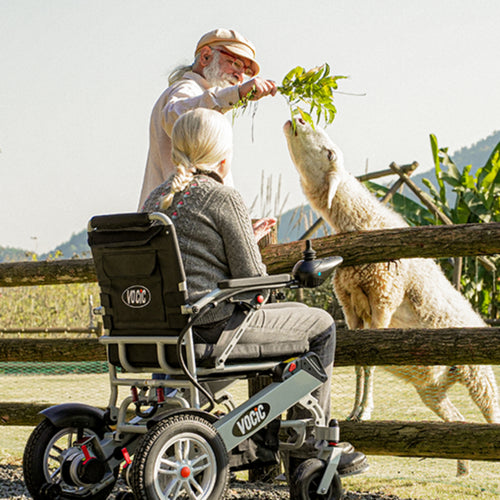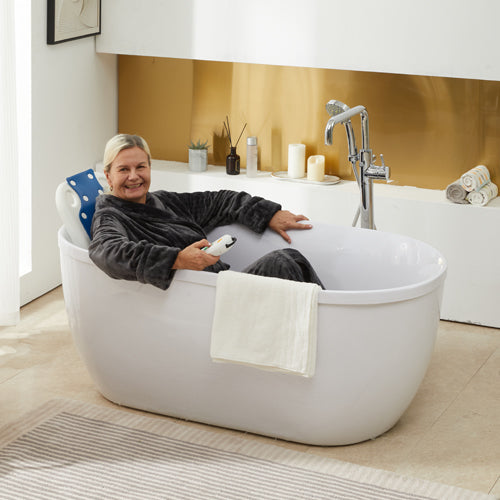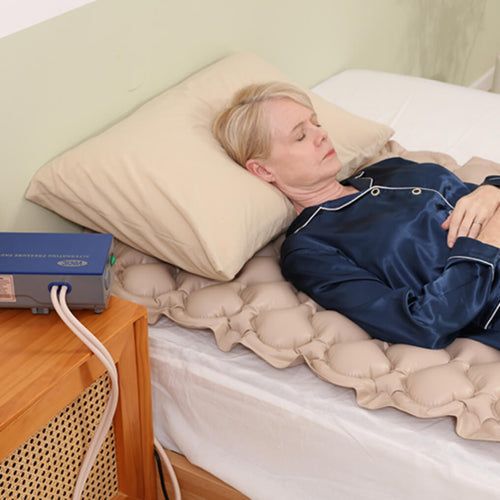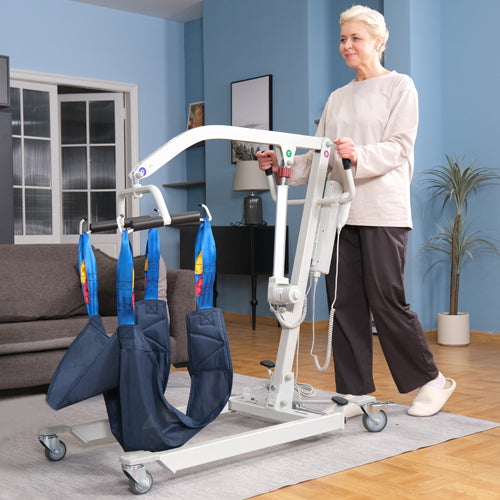When to start using a walker is an important choice for seniors to maintain independent walking and living. A walker isn't just a tool to help them walk, it can also help maintain freedom and vitality.
In this article, we will discuss when older adults should start using a walker and how to adapt to using a walker to ensure they are able to move freely and improve their quality of life.
When Should Older People Consider Using a Walker?
As family members, we should have mobility aids available for seniors to help them move independently when they experience conditions that prevent them from maintaining their independence and mobility. The use of a walker is recommended if the following symptoms are present.1. Balance and Stability Issues
As we age, we often find ourselves losing balance and stability, and this increases the risk of falling. When you find yourself stumbling or almost falling frequently in your daily life. It is recommended that you use a walker for seniors, which provides the necessary support for safe mobility as well as making your daily activities safer.2. Increased Fatigue While Walking
If you are walking outdoors and find that walking longer distances makes you become tired or sore, especially in your legs, back or joints, you may choose to use a rolled walker can help with travelling. This is because the walker can support some of your body weight, allowing you to keep walking for longer periods of time without feeling fatigued.3. Recovery After Surgery or Injury
If you've just undergone surgery or a serious injury and can't maintain mobility to allow the wound to heal properly. This is where a walker can help provide you with the support you need during this recovery phase, taking pressure off the healing parts of your body. Not only does it prevent your body from further injury, but it also allows your body to return to normal activities more quickly.4. Healthcare Provider Recommendations
Sometimes a doctor, physical therapist, or other healthcare provider may recommend a walker based on their professional assessment of your mobility impairment. By taking their advice you can prevent you from developing a more serious mobility impairment.5. Reduced Activity
If you're less active because you're worried about falling or struggling to get around, a walker can help you with just that trouble. This is because, it can provide you with the confidence and support to help you continue to participate in your daily activities and social life, preventing a decline in your health due to lack of activity.
What Are the Different Types of Walkers That Can Help Older Adults?
Before purchasing mobility aids for seniors and others, you need to understand what types of mobility aids seniors have to choose from and what different mobility needs they can meet:1. Standard Walkers
Standard walkers have a simple frame and four legs. So they are very stable and provide a lot of support for people who need help to walk. But you'll need to hold them up to move forward in order for you to stay stable.2. Two Wheeled Walker
It's just like a standard walker, but it has two wheels on the front and two legs. This allows you not to have to lift them completely; just tilt and push. In addition, they provide a good balance between stability and ease of movement, especially if you have good arm strength.3. Rollator Walker
There are two types of walkers, a 3 wheel walker and a 4 wheel walker, both of which are equipped with seats and hand brakes. For example, the Z21 walker from VOCIC is a 4 wheel walker that also has these features. Therefore, they are more suitable for elderly people or people with limited mobility who want to keep moving and need to stop and rest from time to time during the movement.4. Knee Walkers
Designed for foot or ankle injuries, knee walkers allow the injured leg to rest on a mat while the other leg exercises. They are a great alternative to crutches and give you more stability and freedom to move around.Each of these four mobility aids meets different mobility needs in different situations, helping people to remain independent and safe while traveling.
How Can Older People Be Helped to Adjust to Using a Walker?
After purchasing a walker, there is also a need to help seniors adjust to the fact that using a walker requires physical and emotional support. These are some suggestions:- Professional Guidance: Tell your physical therapist or health care provider about your condition and they will give you the right type of walker and walker for your situation. In addition, they will teach you the proper techniques for using a walker, such as proper posture, how to navigate different terrains, and how to safely use a walker while sitting and standing.
- Gradual Introduction: Start using your walker slowly in a comfortable, familiar environment (e.g., your home) and gradually get used to the walker.
- Positive Reinforcement: Family members and caregivers can encourage the older adult or person with disabilities to use a walker. This can help the older adult feel more confident and less self-conscious about using a walker.
- Personalize the Walker: Customize the walker with accessories that make it more functional and enjoyable to use, such as bags, eyeglasses water bottle holders, or even personalized decorations. Make the walker more of a personal choice than a medical item.
- Home Safety Adjustments: Modify the living environment to make walking easier and safer to use. Examples include rearranging furniture to make passageways more spacious, securing or removing loose rugs to prevent slipping, and non-slip flooring and thresholds to facilitate walker use.
These strategies will allow older adults to better adapt to and use mobility aids to ensure safety while increasing their mobility and independence.

Care and Maintenance Tips for Mobility Aids
Proper maintenance of mobility aids such as walkers, wheelchairs, and canes can extend their lifespan and safety. Here are some helpful maintenance tips:- Regular Cleaning: Cleaning your walker regularly can remove dirt and prevent bacteria buildup. You can use a mild detergent and damp cloth for general cleaning. If it is a metal part, you can use a specialized cleaner to prevent rust.
- Regular Inspections: Regularly and quickly check your walker or wheelchair for wear or damage, especially the brakes and wheels, so that it can keep running smoothly. You also need to keep the moving parts lubricated to prevent dust from getting in and don't forget to tighten any loose screws or bolts to ensure everything is stable and secure.
- Wheel Maintenance: If your walker is a wheeled walker, prioritize checking the tires for signs of wear and, if it is pneumatic, make sure the tires are inflated to the correct pressure. If there are any damaged ones, replace the worn tires to maintain good traction and safety.
- Battery Maintenance for Electric Wheelchairs: If you use an electric wheelchair, check the battery charge regularly and make sure the battery is charged according to the manufacturer's guidelines. Also, check the battery terminals for corrosion and clean them as needed.
- Professional Maintenance: Consider having your walker serviced by a professional every year. They can perform a comprehensive inspection and handle more complex maintenance tasks.









